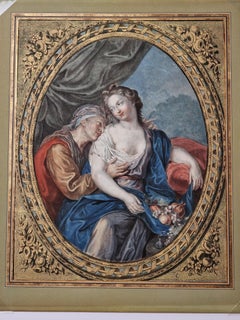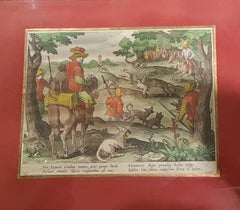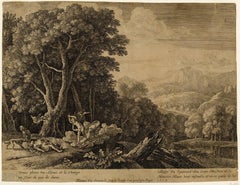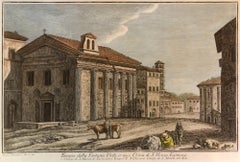Art by Medium: Engraving
1770s Art by Medium: Engraving
Engraving, Aquatint
Mid-18th Century Old Masters Art by Medium: Engraving
Etching, Handmade Paper, Laid Paper, Engraving
1620s Art by Medium: Engraving
Engraving
18th Century Renaissance Art by Medium: Engraving
Engraving
Mid-17th Century Old Masters Art by Medium: Engraving
Handmade Paper, Engraving, Etching
Late 18th Century Old Masters Art by Medium: Engraving
Watercolor, Laid Paper, Engraving, Etching
1750s Naturalistic Art by Medium: Engraving
Watercolor, Engraving
1750s Naturalistic Art by Medium: Engraving
Watercolor, Engraving
1760s Art by Medium: Engraving
Engraving
1710s Naturalistic Art by Medium: Engraving
Watercolor, Engraving
1710s Naturalistic Art by Medium: Engraving
Watercolor, Engraving
1760s Art by Medium: Engraving
Engraving
Mid-18th Century Old Masters Art by Medium: Engraving
Engraving
16th Century Old Masters Art by Medium: Engraving
Handmade Paper, Laid Paper, Engraving
18th Century Art by Medium: Engraving
Watercolor, Engraving
18th Century Art by Medium: Engraving
Mezzotint
1670s Realist Art by Medium: Engraving
Engraving
Mid-18th Century Old Masters Art by Medium: Engraving
Engraving
1780s Naturalistic Art by Medium: Engraving
Engraving
Early 18th Century Naturalistic Art by Medium: Engraving
Watercolor, Engraving
Mid-17th Century Old Masters Art by Medium: Engraving
Engraving
1750s Naturalistic Art by Medium: Engraving
Watercolor, Engraving
18th Century Art by Medium: Engraving
Watercolor, Engraving
18th Century and Earlier Art by Medium: Engraving
Engraving
1750s Naturalistic Art by Medium: Engraving
Watercolor, Engraving
18th Century Rococo Art by Medium: Engraving
Engraving
1750s Naturalistic Art by Medium: Engraving
Watercolor, Engraving
1710s Naturalistic Art by Medium: Engraving
Watercolor, Engraving
1750s Naturalistic Art by Medium: Engraving
Watercolor, Engraving
Mid-18th Century Old Masters Art by Medium: Engraving
Engraving
Late 18th Century Art by Medium: Engraving
Engraving
Early 18th Century Naturalistic Art by Medium: Engraving
Watercolor, Engraving
Early 18th Century Old Masters Art by Medium: Engraving
Paper, Engraving
Early 18th Century Naturalistic Art by Medium: Engraving
Watercolor, Engraving
Mid-18th Century Old Masters Art by Medium: Engraving
Engraving
1780s Naturalistic Art by Medium: Engraving
Paper, Watercolor, Gouache, Engraving
1750s Naturalistic Art by Medium: Engraving
Watercolor, Engraving
Late 18th Century Naturalistic Art by Medium: Engraving
Engraving
Late 17th Century Old Masters Art by Medium: Engraving
Engraving
Late 18th Century French School Art by Medium: Engraving
Engraving
Mid-18th Century Old Masters Art by Medium: Engraving
Engraving
Early 18th Century Naturalistic Art by Medium: Engraving
Watercolor, Engraving
Early 18th Century Naturalistic Art by Medium: Engraving
Watercolor, Engraving
Early 18th Century Naturalistic Art by Medium: Engraving
Watercolor, Engraving
16th Century Old Masters Art by Medium: Engraving
Engraving
1730s Baroque Art by Medium: Engraving
Engraving
18th Century Art by Medium: Engraving
Watercolor, Mezzotint
Late 18th Century Naturalistic Art by Medium: Engraving
Engraving
Early 18th Century Naturalistic Art by Medium: Engraving
Watercolor, Engraving
Mid-18th Century Old Masters Art by Medium: Engraving
Engraving
Early 18th Century Naturalistic Art by Medium: Engraving
Watercolor, Engraving
17th Century Old Masters Art by Medium: Engraving
Engraving
Early 18th Century Realist Art by Medium: Engraving
Engraving
Late 18th Century French School Art by Medium: Engraving
Engraving
Mid-18th Century Old Masters Art by Medium: Engraving
Engraving
Early 18th Century Other Art Style Art by Medium: Engraving
Engraving
Late 18th Century Old Masters Art by Medium: Engraving
Engraving
Late 18th Century French School Art by Medium: Engraving
Engraving





